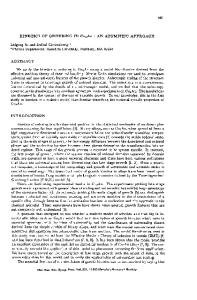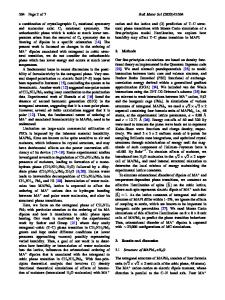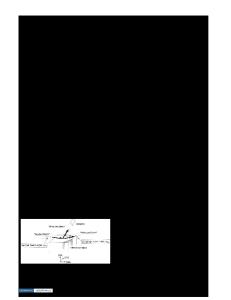Ordering in (La,Sr)(Al,Ta)O 3 substrates
- PDF / 462,880 Bytes
- 7 Pages / 612 x 792 pts (letter) Page_size
- 30 Downloads / 326 Views
J.H. Scott National Institute of Standards and Technology, 100 Bureau Drive, Gaithersburg, Maryland 20899 (Received 30 December 2002; accepted 25 April 2003)
(La, Sr)(Al, Ta)O3 (LSAT) has recently received increased attention as a substrate for the deposition of various oxide films. LSAT is usually considered as having a perovskite structure. However, the exact atomic structure of LSAT is not yet well known and has received little attention up to now. In this paper, a series of studies using x-ray diffraction, transmission electron microscopy, and energy dispersive spectrometry were conducted to determine the atomic structure of LSAT. It was found that LSAT consists of two types of domains: one with a simple cubic perovskite structure (disordered with a ⳱ 0.3868 nm) and the other with a face-centered-cubic structure (ordered with a ⳱ 0.773 nm). Computer image simulation of high-resolution lattice images suggests that the ordered structure is due to ordering of the Al and Ta ions.
I. INTRODUCTION
The quality of thin films is strongly controlled by the quality of the substrate on which they are deposited. For the epitaxial growth of films with perovskite structure, single-crystal substrates with the following specifications are required. The lattice constants and thermal expansion coefficients of the substrates should closely match those of the films; also the substrate should not have phase transitions, which create microtwins. In addition, for many electrical applications, low-dielectric constants and dielectric losses are required. And finally, the cost should be relatively low. Many single crystals such as SrTiO3 (STO), LaAlO3 (LAO), and MgO are used for growth of perovskite films. However, these single crystals satisfy only some of the required substrate specifications mentioned above. Therefore, approaches using mixed perovskite substrates have been used to meet these requirements.1 In the search of new substrates for superconductor films, (La,Sr)(Al,Ta)O 3 (LSAT), a 30/70 mol% solid solution between LaAlO3 (LAO) and
a)
Present address: Motorola Labs, 7700 S. River Parkway, Tempe, AZ. e-mail: [email protected] b) This author was an editor of this journal during the review and decision stage. For the JMR policy on review and publication of manuscripts authored by editors, please refer to http:// www.mrs.org/publications/JMR/policy.html. 1698
http://journals.cambridge.org
J. Mater. Res., Vol. 18, No. 7, Jul 2003 Downloaded: 15 May 2016
Sr2AlTaO6 (SAT), was fabricated at AT&T Bell Laboratories.2 This new material LSAT eliminates the difficulties of twinning, strain, and nonisotropic properties found in pure LAO. Also, the cost is much lower than that of STO. In addition, LSAT has low-dielectric loss and medium dielectric constant (approximately 22.5), which makes it suitable for microwave applications.3 Therefore, LSAT has received increased attention since its introduction and has been used as the substrate of choice in various thin film depositions.4–6 Despite its increasing popularity, the exact atomic
Data Loading...











